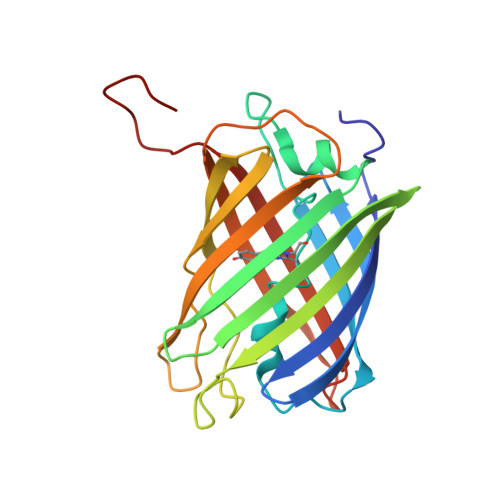Chromophore-Protein Interactions in the Anthozoan Green Fluorescent Protein Asfp499
Nienhaus, K., Renzi, F., Vallone, B., Wiedenmann, J., Nienhaus, G.U.(2006) Biophys J 91: 4210
- PubMed: 16980366
- DOI: https://doi.org/10.1529/biophysj.106.087411
- Primary Citation of Related Structures:
2C9I - PubMed Abstract:
Despite their similar fold topologies, anthozoan fluorescent proteins (FPs) can exhibit widely different optical properties, arising either from chemical modification of the chromophore itself or from specific interactions of the chromophore with the surrounding protein moiety. Here we present a structural and spectroscopic investigation of the green FP asFP499 from the sea anemone Anemonia sulcata var. rufescens to explore the effects of the protein environment on the chromophore. The optical absorption and fluorescence spectra reveal two discrete species populated in significant proportions over a wide pH range. Moreover, multiple protonation reactions are evident from the observed pH-dependent spectral changes. The x-ray structure of asFP499, determined by molecular replacement at a resolution of 1.85 A, shows the typical beta-barrel fold of the green FP from Aequorea victoria (avGFP). In its center, the chromophore, formed from the tripeptide Gln(63)-Tyr(64)-Gly(65), is tightly held by multiple hydrogen bonds in a polar cage that is structurally quite dissimilar to that of avGFP. The x-ray structure provides interesting clues as to how the spectroscopic properties are fine tuned by the chromophore environment.
Organizational Affiliation:
Department of Biophysics, University of Ulm, 89069 Ulm, Germany. uli@uiuc.edu















